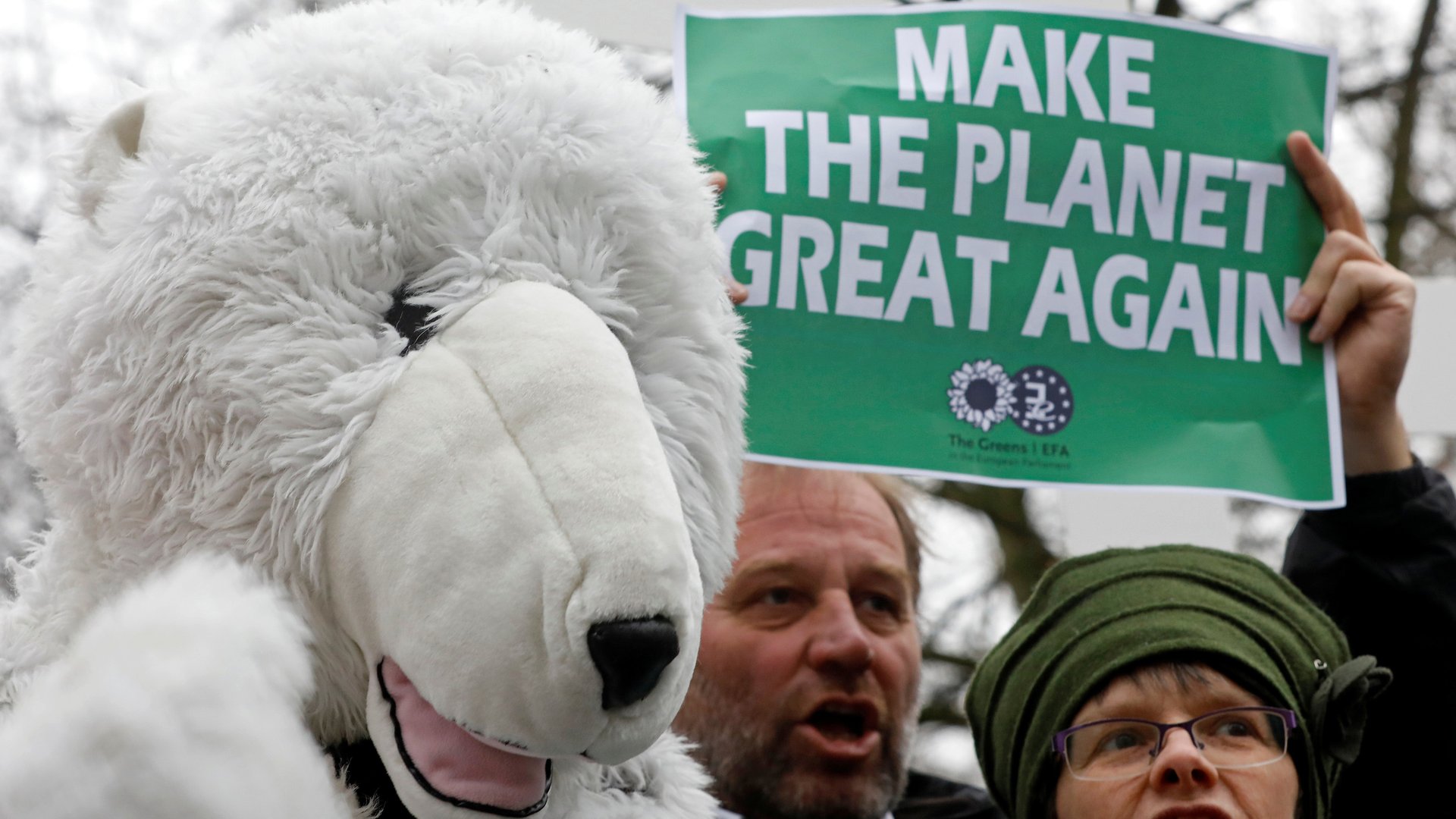A leaked memo reveals Trump could undo Obama’s climate legacy by manipulating a single number
US president Donald Trump’s war on the environment has started with putting climate-change deniers in powerful places. Next the bureaucrats will start disassembling years of work that has gone into protecting future generations.


US president Donald Trump’s war on the environment has started with putting climate-change deniers in powerful places. Next the bureaucrats will start disassembling years of work that has gone into protecting future generations.
A starting point, according to a leaked memo from Trump’s transition team, will be to lower a key number: the social cost of carbon (SCC). This measures the economic damage caused by a ton of carbon emissions in a given year. In 2015, according to an updated calculation by many US government agencies, the SCC was $36 per ton.
Under former president Barack Obama, government agencies used the SCC value to guide the setting up of regulations. These involved everything from emissions standards for cement manufacturers to fuel-efficiency standards for cars and trucks.
Tom Pyle, a climate-change denier and Trump’s lead on the department-of-energy transition, whose day job is to lead two fossil-fuel industry-funded lobbying groups, wrote this in the leaked memo:
Ending the use of the social cost of carbon in federal rulemakings. The Obama administration aggressively used the social cost of carbon (SCC) to help justify their regulations. During the Trump Administration the SCC will likely be reviewed and the latest science brought to bear. If the SCC were subjected to the latest science, it would certainly be much lower than what the Obama administration has been using.
What is the social cost of carbon?
Humans put a relative value on everything, but they have failed to put one of the environment. That is why climate change has been called “the biggest market failure the world has seen.”
But putting a value on the cost of carbon emissions is no easy task. After years of fierce debates in mostly academic journals, there is still no agreement on a single value. What all climate scientists agree on, however, is that, the more they understand the implications of climate change and the better their models get, the more they realize that the cost is higher than their past estimates.
Consider the work of William Nordhaus, an economist at Yale University, who is known for his foresight in understanding the economic effects of climate change. He was among the first people to put a value on carbon emissions. His estimate of the SCC in 2007 was $6 per ton, one of the most conservative of SCC values.
However, in a new study published Jan. 31, Nordhaus updated his model. He now estimates the value to be $31 per ton of carbon emissions. Though this is still lower than the value the US government is using, he is saying that his past projections were likely an underestimate. (Given that the models the government used partially rely on Nordhaus’s work, if reassessed today they would likely be considered an underestimate too.)
What a higher SCC means in practical terms is that each ton of carbon emitted today does more damage than previously thought. This may be because we are better to able to estimate the damage from rising temperatures or because we are heading towards a higher global temperature sooner than we thought.
“Countries have agreed on a target temperature limit of 2 °C, but this seems far removed from actual policies, and probably infeasible,” Nordhaus wrote, commenting on the Paris climate agreement, which came into force in Nov. 2016. (The 2 °C limit is seen by environmental scientists as a threshold beyond which climate change’s effects will be far worse.)
“A target of 2.5 °C is technically feasible but would require extreme virtually universal global policy measures,” he continued.
Nordhaus’s SCC value still remains conservative. A 2014 meta-analysis, which is a study of studies, of all economic models of SCC, including Nordhaus’s, concluded that a more realistic but still conservative value should be at least $125 per ton of carbon emissions.
So what can Trump do?
Trump’s team, according to the leaked memo, would prefer to abolish the use of the SCC altogether, but it will be an uphill battle. A federal appeals court in Aug. 2016 ruled in favor of the use of the SCC in government regulations. A Supreme Court review is possible, but legal experts believe it’s unlikely.
Ask bureaucrats and they will say how just how important it is to use measures, such as SCC, which have been agreed upon by many government departments. That means these bureaucrats will probably resist attempts to get rid of the measure.
So if the Trump administration cannot stop using the SCC, its next course of attack would be to lower the value the government uses for setting regulation. Technically, this is possible. The court mandates the SCC use but does not fix its value.
The number isn’t set to be reassessed before 2020, though Trump could ask a new committee to review it sooner. But to lower it, his team would need to go against the work of respected scientists. Just last month, the National Academies of sciences, engineering, and medicine released a new report that gave recommendations on how to review the value of SCC and called for transparency. Any manipulation not backed by science is likely to be highly contested.